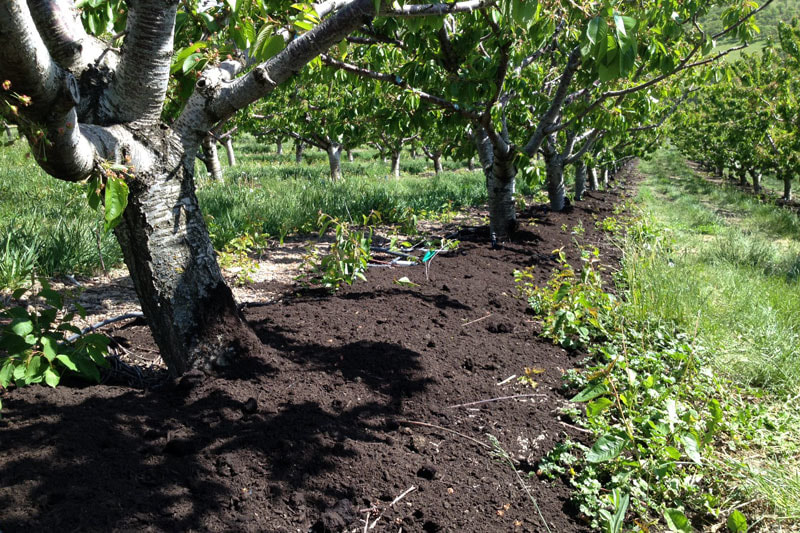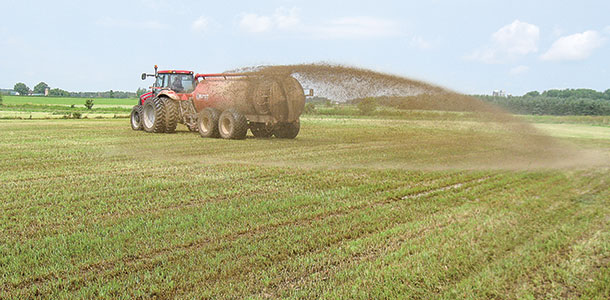Black Soldier Fly Larvae Could Promote Healthy Bacteria Community in Chicken Digestive Tract11/29/2017 I am thoroughly impressed with the quality of studies on BSF that are being published in 2017- such high quality and impactful work. Secondly, it is great to see research on the BSF expanding out to other fields of expertise- such as animal nutrition. The study to be discussed below examined the impact of BSF larvae as a feed ingredient for poultry. They specifically examined the impact of BSF-containing diets on the bacterial community in the gut of laying hens as well as the health of the hens. You will want to read this study- very well done. Borrelli, L., L. Coretti, L. Dipineto, F. Bovera, F. Menna, L. Chiariotti, A. Nizza, F. Lembo, and A. Fioretti. 2017. Insect-based diet, a promising nutritional source, modulates gut microbiota composition and SCFAs production in laying hens. Scientific Reports 7: 16269. In this study they had two diets- a standard soy-cornmeal diet and a treatment diet where the soy was replaced by BSF meal. What did they find for those hens fed an insect diet: 1. After 21 weeks all birds were healthy (no mortality, diarrhea, or other signs of illness) 2. Lower serum cholesterol and triglycerides 3. Lower feed intake and weight gain (because the hens are satiated- a good thing, which links with recent posts on various blogs about using fermented feed... the animals just experience being "full" with less feed) 4. Lower cholesterol content in the egg yolks produced (healthier eggs, maybe?) 5. Shifts in bacterial community in gut of chicken 6. Increased bacteria diversity in gut of chickens 7. Increases in Oscillospira bacteria which could reduce Clostridium difficile 8. Here is a key point (hypothesis) proposed by the authors- the shift in the bacterial community could enhance chitin degradation and enhance short chain fatty acids production. 9. Could enhance nutrient uptake (e.g., vitamins) This study is fairly positive for the BSF community. I am really excited as it demonstrates the BSF could be a great way to maintain a healthier and possibly "happier" animal. I would think this would be important to enhancing the design of confined animal facilities but from a nutritional aspect. Am I surprised? No... being that chickens eat insects, I am not surprised that their eating insect meal results in greater health. Of course, like with all research, others should replicate and verify these results. Until next time- best of luck and happy BSF farming! AuthorJeffery K. Tomberlin, PhD, BSF nutrition planner
0 Comments
When thinking the benefits of black soldier fly production, we often hear people saying the black soldier fly larvae can eat up the organic waste and turn it into insect protein for animal feed, and the residue frass can be used as compost. When they are completely right about the insect protein, but are they saying the right thing about the BSFL frass? Is it a compost? Well, from my opinion, it's not a compost. A good compost is supposed to have a C:N ratio around 20--if the ratio is below 20 then the compost is not quit ready and will potentially burn the plant if applied heavily. This paper by Mannar Arica Alattar showed us that if the BSFL frass is applied as compost, it will stunt the corn plants and cause less leaf growth. Alattar, M. A., Alattar, F. N., and Popa, R. 2016. Effects of microaerobic fermentation and black soldier fly larvae food scrap processing residues on the growth of corn plants (Zea mays). Plant Science Today 3(1): 57-62. http://dx.doi.org/10.14719/pst.2016.3.1.179 In this study, the researchers test the frass as compost, as they mix the frass with soil in a ratio of one part of frass to two parts of soil, and the result shows this mixture is phytotoxic. It was a very heavy mixture, and it's similar to how farmers applied compost (as shown below). From our unpublished data, BSFL fed brewery grain resulting in a frass with low C:N ratio of 14, which means this material is still hot and will potentially burn the plants, and shouldn't be used as compost. There are two ways to use the frass. First is adding more carbon source into the frass and allow the material sit for further decomposition, and the resulting product is high quality compost with appropriate C:N ratio of 20. The second way to use it as raw manure, lightly applying it on the field so it does not burn the crops. In our facilities we allow the frass to dry down and pile them up, so that farmers can come pick it up use directly on their lands. Wanna learn more about this factory? Click Here Black soldier fly larval frass is a very good nitrogen source for crops, and has high value in organic industry. Spring I will not spend too much time discussing the article- I am too excited and want to get it to you asap!! So, I will let the authors do it for me. But, this information is huge for the environment as well as BSF production and waste recycling. 50% reduction in CO2 emissions possible when using BSF!! If these results hold true- can you imagine what can be done with the BSF to offer a means for suppressing greenhouse gas production from food and animal waste??? I am really excited about these results and cannot wait to see more details emerge from these researchers and others interested in this work. Check it out! Perednia, D. A., J. Anderson, and A. Rice. 2017. A Comparison of the greenhouse gas production of black soldier fly larvae versus aerobic microbial decomposition of an organic feed material. Res. Rev. J. Ecol. Environ. Sci. 5: 10-16. So amazing- As always, best of luck and happy BSF farming!!! AuthorJeff Tomberlin, PhD, Always Amazed by BSF!! The concept of raising BSF on animal manure to feed to livestock, poultry, aquaculture, and possibly reptiles is not new. Researchers have been exploring this topic for a number of decades. However, given the concerns about potential pathogen movement within such a closed system has (and of course pass incidents happening- see Mad Cow Disease as an example), regulations in many countries prevent such methods from being employed. But, given the great potential with which BSF can be used to recycle such nutrients- maybe researchers, and the powers that be, need to circle back around and reconsider this technique as an option for dealing with the massive issues of nutrient pollution associated manure produced in confined animal facilities. Check out this recent article by BBC- Scale of 'nitrate timebomb' revealed A recent publication in Animal Nutrition recently tackled the topic but from a different angle. The researchers used horse manure as a means to produce BSF and then feed the resulting larvae back to poultry. I have to admit- I think this might be the first study to raise BSF on horse manure. Something I consider pretty novel and given the number of horses in Texas, USA (my home state), I could see this developing into an interesting market. They found that chickens fed a diet containing BSF were significantly greater in terms of final weights (supported by the Hale study I discussed in a previous post). If you get a chance- check it out....at minimum, this paper demonstrates the great range of BSF for recycling wastes to produce protein which can then be used as feed. Moula, N., M.-L. Scippo, C. Douny, G. Degand, E. Dawans, J.-F. Cabaraux, J.-L. Hornick, R. C. Megido, P. Leroy, F. Francis, and J. Detilleux. 2017. Performances of local poultry breed fed black soldier fly larvae reared on horse manure. Animal Nutrition. As always- best of luck and happy BSF farming! AuthorJeff Tomberlin, PhD, BSF fan Great question (in the title)! As you know, BSF are very sensitive to temperature. Adults will easily succumb to temperatures below 27C (80F)- well, succumb = not mate, which is bad if you are trying to maintain a colony. The larvae on the other hand are a bit more tolerant of "colder" temperatures as they can generate quite a bit of heat in their maggot mass. However, this ability doesn't mean temperatures below 10C are a good thing as such experiences will slow down larval growth and consequently, protein production and biomass remediation. There are few papers (one prior to this post) that I am aware of that examine the relationship of temperature to BSF biology. Holmes, L. A., S. L. VanLaerhoven, and J. K. Tomberlin. 2016. Lower temperature threshold of black soldier fly (Diptera: Stratiomyidae) development. Journal of Insects as Food and Feed 2: 255-262. I believe I mentioned this paper in a previous post. So not to be redundant- I will only provide a brief review. The premise of this study was to determine the lower temperature threshold of BSF during different immature stages. For eggs, a temperature between 12-16C was determined to be the lower threshold- basically, when eggs experienced temperatures between this range they did not hatch. What was really cool with this study was eggs could be stored for longer periods of time when approaching the lower threshold- they could actually could be stored for two weeks before hatching! So there is a sweat spot with temperature and egg storage. Finding it for your population could be useful if you want to store eggs. Temperature threshold for larvae was a bit higher- around 16-19C. Now- please keep in mind these results are population specific. Data generated in this study are for a population from Texas/Georgia, USA. But this paper is not the reason for my post. As I indicated, I believe I covered this paper in a previous post. The main reason for today's post is the following paper: Spranghers, T., A. Noyez, K. Schildermans, and P. De Clercq. 2017. Cold hardiness of the black soldier fly (Diptera: Stratiomyidae). Journal of Economic Entomology 110: 1501-1507. These researchers examined the supercooling point and lower lethal time for prepupae and pupae of the BSF. They determined both stages could survive cold temperatures (below -7C); however, this ability was really dependent on what the larvae were fed. Those provided a more nutritious resource demonstrated more tolerance than those without good nutrition. Basically- the larvae need to be "strong" to make it through the winter. Now- please keep in mind these results are population specific. Data generated in this study are for a population from Texas/Georgia, USA. Wait... didn't I just say this? Why yes I did but it was for the previous study. Interesting point, the same statement needs to be made for this paper as they indicate the specimens they worked with originated from the same Georgia colony. Regardless, I am sure you get my point- each study is population specific so take the results with some reservation as they might not apply to your population of BSF. Moving on.... :) Another important point I gleaned from the paper- BSF larval ability to survive low temperatures was also dependent on time. Those with the best nutrition could survive for three weeks at these low temperatures. So with this in mind, you can experience cold temperatures in your compost or BSF digester and not lose your larvae; however, how you take care of them will be a major factor (good nutrition). Feed your larvae well- especially in the winter (lots of carbohydrates, manage water in digester, moderate protein) so that if you do experience low temperatures you do not lose your larvae! As always- I hope this information is useful. Best of luck and happy BSF farming. AuthorJeff Tomberlin, PhD, BSF nutritionist Hello Everyone- My apologies for being absent all of last week. I was attending the Entomological Society of America meeting in Denver, Colorado. This conference is the largest of its kind in the USA... possibly the world when considering it happens annually. Needless to say- I was busy running around listening to presentations on research, making new friends and visiting with old friends. Great seeing my buddy, Craig Stoops (Clemson grad)!! Nice to know we can still keep up with the younger generation. :) As I mentioned, during the conference I had the opportunity to visit with a lot of colleagues about the black soldier fly and its uses in waste management and protein production. It was great catching up with people I have known for some time. I got to meet with Robert Nathan Alan of Little Herds. He does such a great job with outreach and educating others on the use of insects as food and feed. If you get a chance- definitely visit his website and learn more about his vision. Great seeing Marianne Shockley from the University of Georgia. She is doing some great work exploring the digestibility of BSF by cattle. I can't wait to see her results published. Great job organizing a symposium on insects as food and feed. One person I had the chance to meet for the first time was John Schneider (the researcher- not the actor from Dukes of Hazard fame) at Mississippi State University. He is doing some excellent research exploring light and its impact on mating success of the BSF. And of course- my colleague and partner, Dr. Heather Jordan was at the meeting. And, she presented results on her research exploring the use of microbes to enhance the digestion waste and production of protein with BSF. I am sure I am failing to recall others I was able to catch up with (my apologies)- there were just so many people present. I also had the opportunity to meet new individuals that are doing some cool work with insects as food. I enjoyed learning more about this aspect of insect farming as my work has predominantly focused on insects as feed. Two companies in particular I enjoyed learning more about were .... BugeatersFoods out of Nebraska. Julianne and company are doing some great product development with pasta, rice, and much more with insects. Cowboy Crickets out of Montana was another company I had the chance to learn more about their vision and products currently available. They have some great items available ranging from chocolate chirp cooks (get it!) to cricket frass. Such a great meeting... but I am glad to be home and ready to get back to work. I will try to have a post on the blog this week about BSF biology- so we can get back on schedule learning more about BSF. Thanks for your patience. And as always.... best of luck and happy BSF farming!!! AuthorJeff Tomberlin, PhD, Meeting Attendee @ ESA I recently had a nice email exchange with a colleague in Switzerland about topics of interest on the BSF- and he suggested I circle back around and discuss in-depth some of the benefits of BSF in terms of bioremediation. Specifically, he mentioned aflatoxin, heavy metals, and bacteria. So, I wanted to touch on each of these topics in separate posts as my previous discussion on these topics was fairly limited. And to my colleague in Switzerland- thank you for the suggestion! So, for today- I will discuss aflatoxin. Overview: Aflatoxin is a major concern for stored products globally. This particular toxin is produced a species of fungi (Aspergillus flavus and Aspergillus parasiticus) commonly occurring in the same environment as the stored grains (e.g., maize & peanut) when grown. When the grain is stored in an environment where humidity and temperature are high, the fungi produce the toxin- aflatoxin. As you will read in the link with aflatoxin, it is a carcinogen to people as well as livestock. As such, methods have been developed for detecting the presence of the fungus and the toxin. This is all well and good for developed nations; however, such methods can be expensive and difficult to get into place in developing nations. Even from the most basic sense, excluding impact on human and livestock directly, economically, the impact is massive as well. Watch this video to learn about aflatoxin in Africa. Here is an article that discusses this topic as well: Health economic impacts and cost-effectiveness of aflatoxin reduction strategies in Africa: Case studies in biocontrol and postharvest interventions So what does this have to do with BSF? Great question- that has been addressed in a publication discussed briefly in a previous post. Bosch, G., H. J. van der Fels-Klerx, T. C. de Rijk, and D. G. A. B. Oonincx. 2017. Aflatoxin B1 and accumulation in black soldier fly larvae (Hermetia illucens) and yellow mealworms (Tenebrio molitor). Toxins 185. Synopsis: As you can read, the article focuses on two species- one of which is the BSF. In this particular study they addressed two questions; 1) does concentration of aflatoxin impact life-history of the insect, and 2) could the insect be used to remediate the toxin? So what did they find? 1) Aflatoxin did not impact the development or survivorship of the BSF; 2) the BSF did not bioaccumulate the aflatoxin. Does this matter? Most definitely! This finding is huge- especially if you consider the amount of stored grain contaminated with aflatoxin that cannot be used as animal or human food. "Worldwide, approximately 25% of food crops are affected by mycotoxins causing a loss of nearly 1 billion tonnes of foodstuff per year." Big Picture- what does this mean? Given so much stored grain is impacted, finding a solution for recycling these nutrients is massive as the production of insect biomass (protein) that can then be utilized to feed livestock, poultry, or aquaculture could reduce the economic burden of such waste as well as increase job opportunities, decrease protein deficiencies in developing nations and decrease long-term health impacts due to consumption of aflatoxin. As always- I hope this information is useful. Until next time- good luck and happy BSF farming! AuthorJeff Tomberlin, PhD, BSF choreographer In past posts, I mentioned one of the cool biological aspects of the BSF is its ability to reduce house fly populations associated with wastes being digested by BSF larvae. One of the first papers to discuss this observation was by Dr. Sheppard way back in the 1980s. Bradley, S. W., and D. C. Sheppard. 1984. House fly oviposition inhibition by larvae of Hermetia illucens, the black soldier fly. Journal of Chemical Ecology 10: 853-859. For this post, I wanted to review this paper real quick and then speculate as to how BSF might be suppressing house fly populations. Maybe it will lead to some cutting edge research in another persons lab? At minimum, it will give you some nice science trivia you can bring up at your next dinner with friends (of course- it will depend on the friend). Synopsis: This study was conducted in the laboratory. Basically, they collected wild house flies and placed them in a cage with several oviposition (egg-laying) options. Some contained chicken manure with larvae (late instar- about 1.5 cm in length... so quite big) at various densities while others were controls (chicken manure without larvae). They also conducted this experiment with a lab house fly colony. They examined the number of eggs laid in the substrates 30 minutes, 2.5 hours and 24 hours after exposure. Summary: The big news- BSF reduced house fly oviposition in the manure. They determined if you allow BSF larvae to "work" the manure for more than 30 minutes, house fly oviposition in the substrate can be reduced by 60% or more depending on the density. In the case of strain (this is very important), the wild strain did not oviposit in the manure 2.5 hours after introducing the BSF larvae at the highest density. However, the house fly strain from the lab did continue to do so. So why is this important? Great question- my thought is you can select for house fly strains that will not avoid BSF. TAKE AWAY MESSAGE: Just because BSF larvae are known to reduce house fly oviposition in a substrate does not mean you should depend on the BSF solely for reducing your house fly population. Over time, if you are not taking other measures to reduce house fly numbers, house flies can adapt to a given environment. This can be bad for two reasons (off the top of my head); 1) house flies compete with BSF larvae for resources which could impact your production, and 2) you do not want to breed house flies that might disperse from your facility and end up in your neighbor's home. This outcome would be bad as well- as you can imagine. So- How do BSF reduce house fly attraction/oviposition in a substrate? Here are two ideas: 1. BSF larvae kill E. coli and other bacteria in the resource. House fly larvae utilize these bacteria for their nutrition. If they are removed- they have nothing to consume, which prevents their development (check out previous posts on reduction of E. coli by BSF larvae) 2. BSF outcompete house fly larvae: BSF larvae, as you know, are voracious feeders; it is possible, BSF larvae consume the waste faster than house fly larvae. This could mean if your BSF larval population is at its optimal level- house flies will never be able to develop in the waste as they are unable to consume enough resource to do so. Final thoughts- BSF larvae do so much with regards to reducing house fly populations; however, you need to be conscience of their density as well as use other means to suppress house flies (help the BSF out- use a fly swatter). As always, I hope this information is useful and you enjoyed the read. Good luck and happy BSF farming! AuthorJeff Tomberlin, PhD, BSF wildlife expert |
AuthorIndividuals with over 25 years research experience with the black soldier fly. We are passionate about the science behind the black soldier fly and its ability to convert waste to protein. Get Notified Here
Archives
September 2022
Categories
All
Install an RSS app to get notified from us when a new post is up!
|
ServicesSupport |
About |



 RSS Feed
RSS Feed

